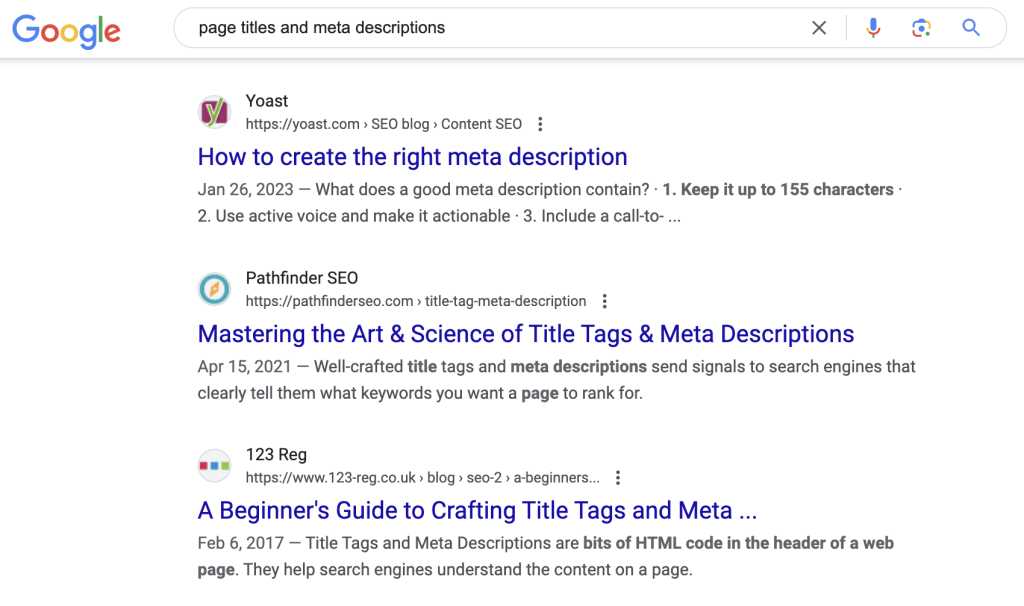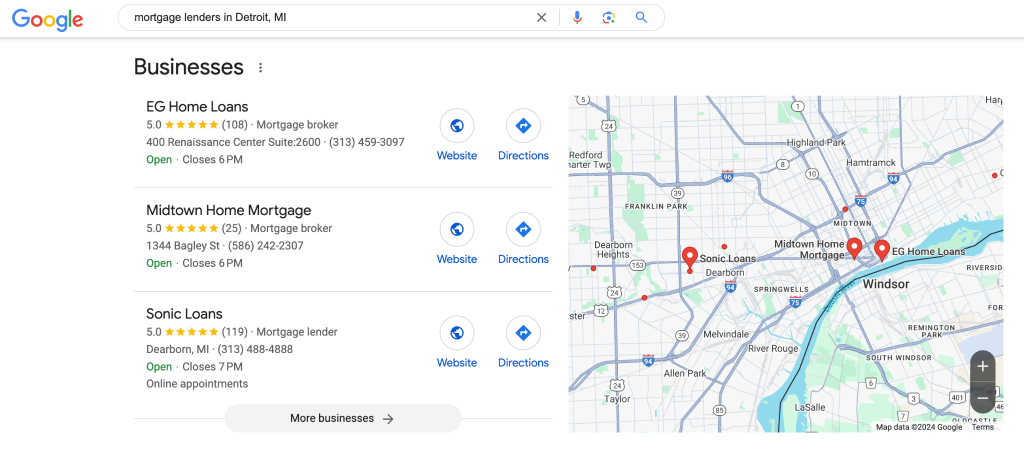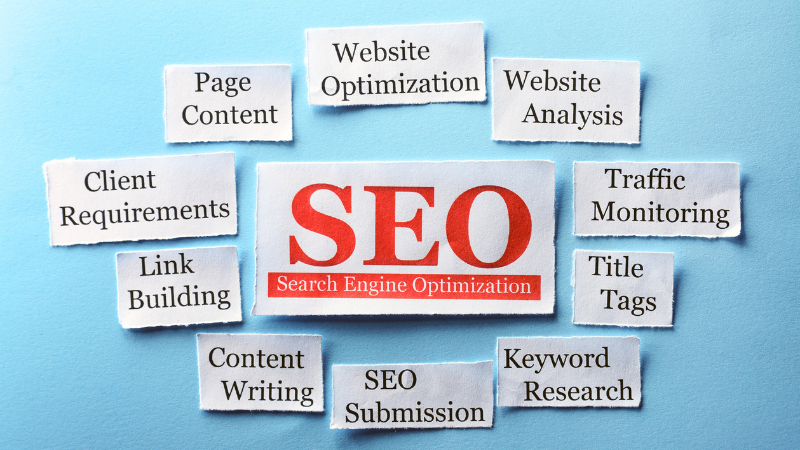Unsure how search engine optimization (SEO) actually works to increase lead generation on your mortgage website?
And have you heard the news about SEO shifting in an increasingly AI world?
SEO can be complex, but we will explain and simplify how you can execute SEO-driven lead generation tactics on your mortgage website—and keep up with the changing tides.
SEO, lead generation, and everything in between
As a mortgage professional in 2024, you understand the importance of a strong online presence for your business.
Currently, SEO is one key way to drive organic (non-paid) traffic to your website.
Here’s how SEO helps mortgage lenders, loan officers, and brokers generate more leads through website content:
- SEO strategies help your website content appear in search results when people look for mortgage-related services online (like home loans or refinancing).
- When more people find your website through search engines like Google, you have more opportunities to generate leads.
There are several strategies you can use to turn website visitors into leads.
Mortgage websites: Your primary lead generation channel
Your mortgage website is your digital office; ideally, it’s a powerful lead generation machine.
SEO helps you attract more visitors to your “office,”—but you must set up certain elements throughout your website to guide them to the next step in their customer journey.
Essential elements for mortgage lead generation websites
- Clear calls-to-action (CTAs): CTAs are prompts that encourage visitors to take specific actions, like “Apply Now” or “Contact Us Today.” CTAs should be prominently displayed, prompting users to fill out a form or take the next step in the loan process.
- Lead capture forms: Forms collect essential information from potential borrowers, and are placed on high-traffic pages, such as homepages, loan program pages, and mortgage calculators.
- Mortgage calculators and tools: Interactive tools like mortgage calculators, refinance calculators, and affordability estimators engage users and encourage them to share their contact details.
- Engaging content: Content that addresses common mortgage-related questions helps to build trust with visitors. Blogs, guides, and FAQs can educate potential borrowers while increasing SEO rankings and driving organic traffic to your website.
- Landing pages: These are targeted pages designed to convert specific types of traffic, such as for first-time homebuyers, investors, or people looking to refinance. Each landing page should be optimized with relevant keywords, a clear CTA, and a form to capture lead information.
So, what are these “SEO strategies” that help your prospects find your key web pages? Read on.
On-page SEO tactics to boost lead generation
On-page SEO involves optimizing the individual pages on your mortgage website to improve your search engine rankings, attract relevant traffic, and increase lead generation.
Let’s dig into each tactic that plays a role in on-page or on-site SEO.
1. Keyword research
At the core of any successful SEO strategy is keyword research.
High-intent keywords are phrases users search for when they are closer to taking action. These should be strategically placed on your mortgage website.
The following popular tools can help you identify these high-intent keywords:
- Google Keyword Planner
- SEMrush
- Ahrefs
Look for keywords with high search volume but low competition, and focus on terms that signal the user’s readiness to engage with a mortgage lender.
Localized keywords and long-tail keywords are also important for reaching leads in specific geographic areas:
- Localized keywords: Improve your chances of ranking higher in local search results and drive more relevant traffic to your website
- Long-tail keywords: Longer, more specific search phrases, such as “how to get a mortgage with a low down payment,” that often have higher conversion rates because they reflect more specific user needs and intents
2. Page titles, headings, and meta descriptions
Page titles and meta descriptions are the first things users see in search engine results, so they must be compelling and relevant to increase click-through rates (CTR).

Page titles should include the primary keyword for the page and have a hook that encourages users to click.
The screenshot above includes examples of “How to create the right meta description” and “Mastering the Art & Science of Title Tags & Meta Descriptions.”
Meta descriptions are the text directly below the titles in the reference screenshot. They should provide a brief, engaging summary of the page’s content and include a CTA.
3. Content optimization
Your website’s content serves to attract and engage potential mortgage leads.
Examples of mortgage website content include:
- Blog posts and guides that answer common questions
- Landing pages designed for specific goals, such as applying for a loan or learning the benefits of refinancing
- Mortgage calculators and interactive tools to offer value and increase engagement
- Videos and infographics that increase the time spent on your website and educate potential clients
Your content must naturally incorporate the relevant, targeted keywords identified during your keyword research.
You also can use your keyword research to guide content topics that match the needs of your audience at various stages of their journey.
4. Internal linking
Internal links guide visitors through your content and direct them toward key lead generation pages.
For example, if you have a blog post discussing mortgage types, you can include internal links to your loan application page or mortgage calculator.
This strategy works two-fold within your SEO strategy:
- Improves the user experience by helping visitors easily find relevant information
- Signals to search engines which pages are the most important, boosting their rankings
5. Mobile optimization
Mobile searches account for a large portion of all online activity in 2024, so optimizing your mobile content is no longer optional.
Make sure your website is responsive and easy to navigate on smartphones and tablets.
Technical SEO strategies for mortgage websites
Technical SEO is complex and best accomplished with the help of an experienced lead generation agency.
This side of SEO involves:
- Improving website speed and performance
- Schema markup for local mortgage services
- Securing your website with HTTPS
- XML sitemaps and structured data

The power of local SEO for generating mortgage leads
The most important thing you can do to improve your local SEO is to complete your Google Business Profile, including:
- Updating business hours, website, phone number, and location
- Uploading photos of your business, products, and services
- Responding to customer reviews
A complete, well-managed profile will significantly improve your prospects’ ability to find you online.
The future of SEO: Introducing GEO
Generative engine optimization (GEO) is optimizing content for AI-driven search engines.
While traditional SEO is focused on ranking content on search engine results pages (SERPs), GEO aims to get content favored by AI tools like ChatGPT, Google’s AI Overviews, and others.
Experts predict that in the future, our mortgage marketing strategies may have to include elements of both SEO and GEO to stay ahead of competitors in evolving AI spaces.
Mortgage lead generation websites FAQs
Mortgage agents get leads through various methods, including online marketing (SEO, PPC ads, social media), referrals from satisfied clients or real estate agents, and attending networking events.
Additionally, agents often leverage content marketing, such as blogs and videos, to attract potential clients.
To market your mortgage business, build an online presence through SEO, social media, and email marketing.
Engage potential clients with valuable content, including blogs, videos, and calculators. Networking with real estate agents, offering client testimonials, and using local SEO tactics can also help drive traffic and leads.
Multiple sources can generate leads, including your website, social media platforms, mortgage-specific lead generation services, referrals, email campaigns, and networking events.
Online ads (Google and Facebook) and valuable content, such as mortgage calculators or educational blog posts, also help attract and convert leads.
Stay one step ahead with Kaleidico
SEO is complicated and always evolving.
Kaledico’s SEO services help to boost your visibility so you can reach your audience where they’re at—and stay one step ahead of your competitors.
